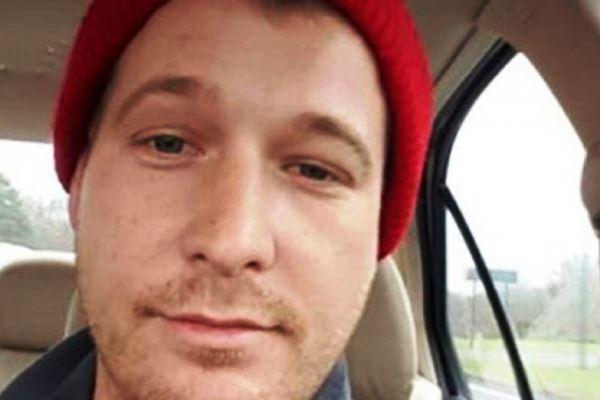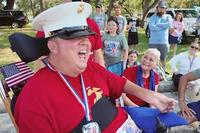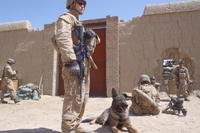While other families were looking forward to the holidays, Rachel Clinger was awaiting news of her husband, who had disappeared a week before Christmas from his New Jersey military base.
The wait did not last long -- Marine Sgt. Tristan Clinger's body was found days later.
Clinger, she said, had battled depression but feared he would be discharged if he got help. He is not the only one.
Experts who work with both active-duty military and veterans say the stigma of mental illness -- whether combat stress, depression, anxiety or substance abuse -- continues to be an impediment to treatment, often leading to tragic consequences. With over 2.5 million men and women having served in Iraq and Afghanistan over the last decade, plus thousands more currently stationed overseas, experts say it's more critical than ever to make sure those who need it find a pathway out of despair.
"We had six suicide calls into our office in one day -- one day," said Paul Rieckoff, founder and head of Iraq and Afghanistan Veterans of America, the largest service organization focused solely on the recent generation of vets. He's been working diligently for over a decade to connect them with available services and lobbying on the Hill for better access to care.
"I think we have made some headway, but there is a long way to go and at the end of the day, there is still stigma and fear of being labeled 'a broken, damaged veteran,'" he told FoxNews.com.
He believes the problem is worse than assumed, particularly among young veterans. The most frequently used statistic -- 22 veterans committing suicide a day -- is based on older numbers, and does not take into account veterans who fall through the cracks, he said.
"It's much higher. ... We think we are losing a lot of young people," Rieckoff said.
Case in point: The suicide of Tyler Schlagel, 29, a former Marine corporal, on Dec. 9 was the 14th in his military unit since the group returned from Afghanistan in 2008. According to a recent report, even more have attempted suicide, one three days after Schlagel's death. No one knew how badly he was suffering, even his closest friends and family.
"They set up all these hotlines and things for guys to get help," David Gwinn, a Navy corpsman who served with Schlagel and had survived his own suicide attempts -- twice, told The New York Times. "But what do you do when most of the guys don't want help?"
Stigma can manifest itself in different ways, said Dr. Wendy Tenhula, national mental health director for the integrated VA/DoD mental health program. Service members and veterans fear there will be professional and social repercussions for seeking help. They don't trust medications or therapy or both. They are embarrassed, and chafe against "being seen as or being labeled as weak or incompetent or dangerous," she said.
Sometimes the stigma is so internalized, the individual refuses to see they need help. Many self-medicate with alcohol and drugs; they withdraw, and avoid contact.
"The resistance to getting help takes many forms but it comes down to this -- it hurts, and they don't know how to come in and get that help and to sit with that hurt," said Dr. Tracy Stecker, a research health scientist at the VA in Charleston, S.C., who engages in mental health outreach.
According to figures provided to FoxNews.com, nearly 1 million active-duty service members were diagnosed with at least one mental disorder between 2000 and 2011, and the numbers increased as the wars wore on. From 1998 to 2011, 2,990 service members took their own lives while on active duty.
But like Sgt. Clinger, whose funeral services were held in Ohio on Jan. 8, the majority (55 percent) of victims were never deployed overseas, suggesting mental health in the military is more than just a combat-related issue. Clinger's death is under investigation.
Starting in 2008, the Defense Department has waged a multi-pronged war against stigma, in a bid to reach more people.
Rules were changed: the military began embedding mental health providers in units, and took the mental health question off of the questionnaire for security clearances. They launched an anti-stigma campaign called "Real Warriors. Real Battles. Real Strength" to convey that emotional struggles following wartime service are common, and not an indicator of weakness. They invested in research and outreach.
"Most service members who seek and receive psychological health support improve and remain on active duty. Because getting help often leads to a full recovery, seeking mental health care is not a career ender," Navy Capt. Anthony Arita, director of the Deployment Health Clinical Center at the DoD, said in a statement. That said, he acknowledged "not all service members and veterans who need treatment receive it, due to a variety of barriers and challenges," including stigma.
Meanwhile, the VA has embarked on a similar outreach campaign, including the Veterans Crisis Hotline, which has taken more than 2 million calls since its inception in 2007. In 2011, the VA launched an interactive website called "Make the Connection" to help vets, families and communities with resources and strategies for self-diagnosis and accessing treatment.
According to the VA, more than 1.5 million vets sought help for PTSD and other mental health problems in fiscal 2014, including over 536,000 for substance abuse, and 535,000 for PTSD (of those, over 141,000 were recent veterans).
"Something we do know is that more and more veterans are coming to the VA for mental health care," said Tenhula. "We can't point for sure to a reduction in stigma, but we do know that more veterans are seeking care and more veterans are reaching out and helping each other."






























